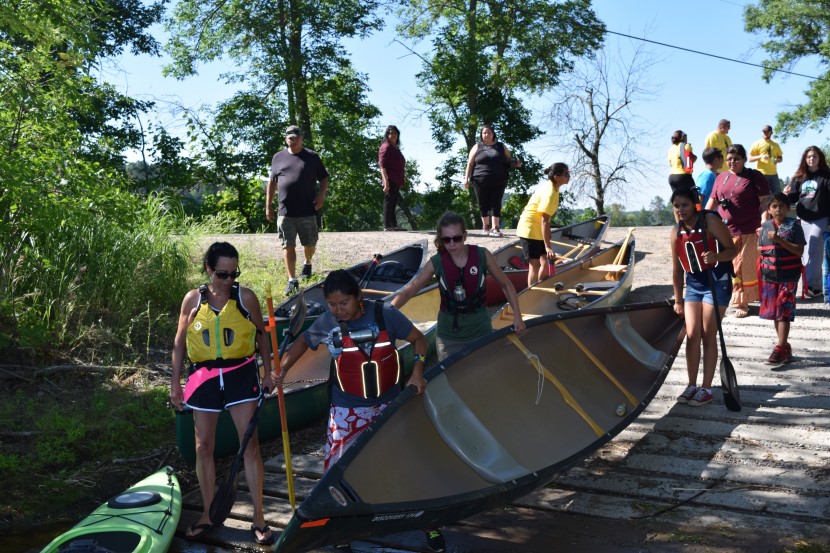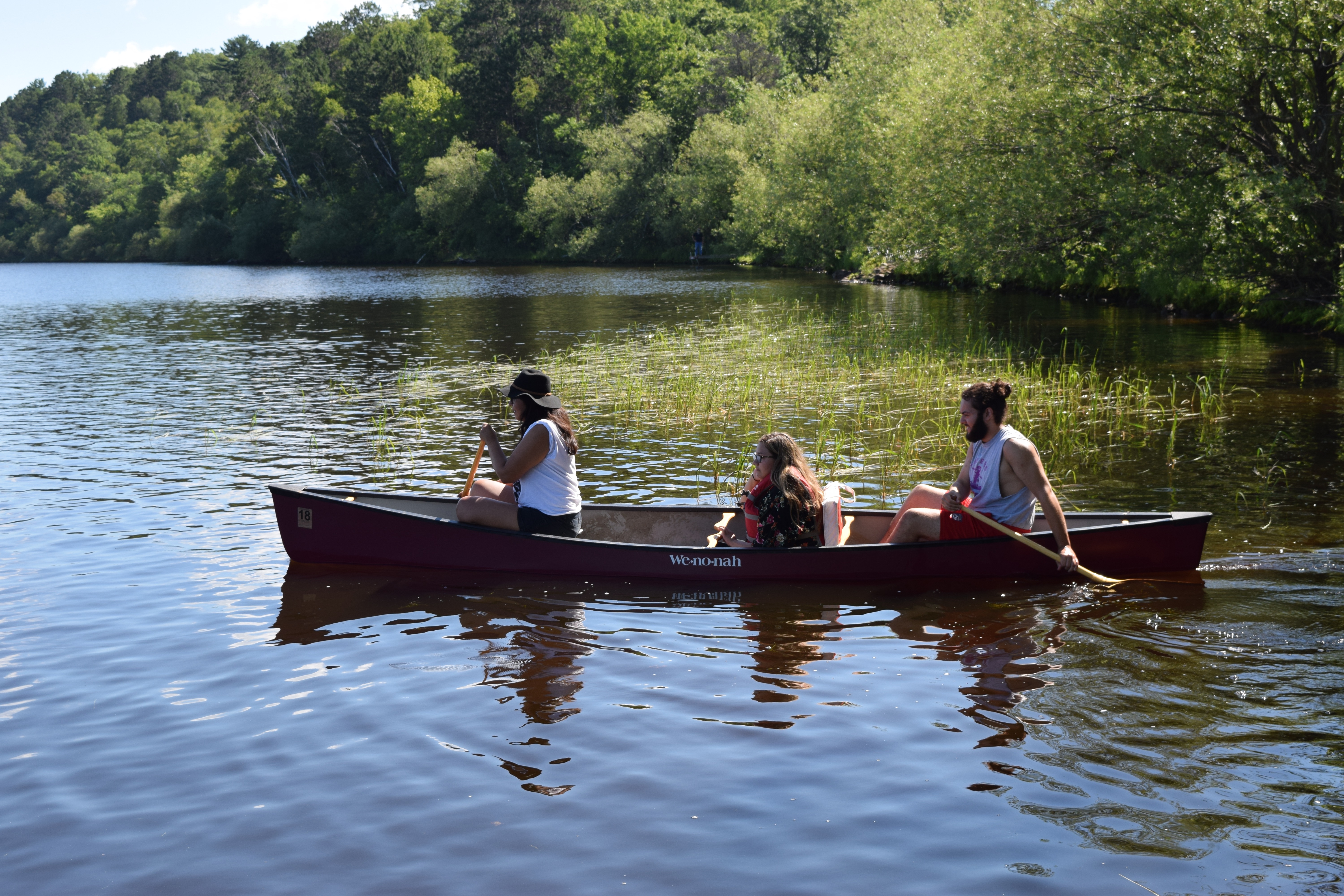
The goldenrod-colored t-shirts ran out quickly at this year’s Sandy Lake Ceremony. The shirts read Mikwendaagoziwag.
They are remembered.
What happened at Big Sandy Lake is a little known story in mainstream United States history, but the Anishinaabe people never forgot that more than 400 Ojibwe died due to the removal schemes of the state and federal governments.
In the fall of 1850, Ojibwe from Minnesota, Wisconsin and Michigan tribes were due annuities from the federal government. These annuities were normally paid at La Pointe, Wisconsin, but the government informed the tribes that they must instead be at Sandy Lake in Minnesota by October 25, some 285 canoe miles distant from La Pointe. A few of the easternmost tribes refused to travel that far with winter approaching, but still more than 5,500 people made the journey for what was owed and promised to them.
When the people arrived at Sandy Lake, there was no government agent nor any supplies waiting for them. There was only the already poorly provisioned local Sandy Lake tribe, which was suffering from the second year in a row of bad wild rice conditions. The visitors made camp outside the newly established agent office and waited six weeks with no support. The lack of food and deteriorating conditions made the people sick, and at least 150 died from starvation, dysentery and measles.
On December 2, a partial annuity payment finally arrived, but it was only three days’ worth of food with no money to purchase any more supplies. Most of the people saw there was no use in waiting anymore and began the journey back to their homes, though some stayed behind because they were too sick to travel. With winter set in, it was a harrowing journey, and 250 more died along the way.
The goal of all this deception on behalf of the United States government was to remove Michigan and Wisconsin bands of Ojibwe to Minnesota and trap them there. Although the people suffered, the government’s plan didn’t succeed, as the tribes returned home and declared that they would not be removed from their lands again.
The Sandy Lake Ceremony to remember the ancestors who perished and also persevered through this tragedy took place on July 26 this year and was attended by representatives from tribes in Minnesota, Wisconsin and Michigan. The Horse Nation from the 5th Annual Love Water Not Oil Tour also visited, with Lakota and Dakota individuals taking part in the day’s activities as well.
The morning began with a ceremony on the east side of the lake, and then participants loaded into canoes and paddled across to the Army Corps of Engineers Sandy Lake Recreation Area where the Mikwendaagoziwag Memorial was built in October of 2000. Attendance was high on the warm, sunny afternoon, and there was prayer before a feast, shared on the grassy knoll adjacent to the dam. There was plenty of food and shade for everyone, and after the meal, tribal representatives were invited to share their thoughts on the significance of the day’s events.
A common theme was that bands, though legally separate, should remember to stay unified through ceremony. Terry Tibbetts, Chairman of the White Earth Nation, stressed that staying together and united keeps the bonds between communities solid and makes everyone stronger as a whole. Jason Schlender, vice chairman of the Lac Courte Oreilles Band, said, “It’s as simple as using tobacco and having some food.”
Other issues, such as oil pipelines, were also discussed, with Winona LaDuke of White Earth and the non-profit organization Honor the Earth speaking briefly about Enbridge’s Line 3 expansion project and the importance of Minnesota’s clean water. Dylan Jennings, representing Bad River Band and the Great Lakes Indian Fish and Wildlife Commission, which hosts the ceremony each year, reiterated that his tribe has decided not to renew a lease to Enbridge to transport oil across their land. He emphasized that, “The only way we’ll be able to move forward is to educate our nonnative relatives.”
Perhaps the most important message passed along, however, is that participants are not only remembering their relatives who were laid to rest at Sandy Lake, wrapped in birch bark in the old way and said to have turned the hillsides white without snow. They are also remembering that they have survived in spite of all that the Anishinaabe have been through. “They are remembered,” but also “We are still here.”
On reflection, Harvey Goodsky, Jr. said that the people are “lucky enough to have [Sandy Lake] area to canoe and exercise our rights in, even though many believed it was a bad place. It’s good to do our remembrance and hope we can cross our pristine waters and hold ceremony in the future. Because it helps our spirits.” Algin Goodsky said, “It was a great experience. I really appreciated the support from tribes that came from all over and the DNR for watching over everyone.” The Department of Natural Resources followed the canoers in their own boat to ensure everyone made it safely across the lake.
As part of the legacy passed on to survivors, tribal historian Don Wedll pointed out that people need to think about and understand what happened at Big Sandy because of how it relates to treaty rights in the context of removable versus non-removable status.
The Sandy Lake Tragedy is yet another point in history when the US Government tried to remove or eradicate indigenous peoples but ultimately failed. The Anishinaabe can be proud of their survival and thankful to their ancestors for their fortitude and sacrifice in the past. They are remembered, and they always will be.
